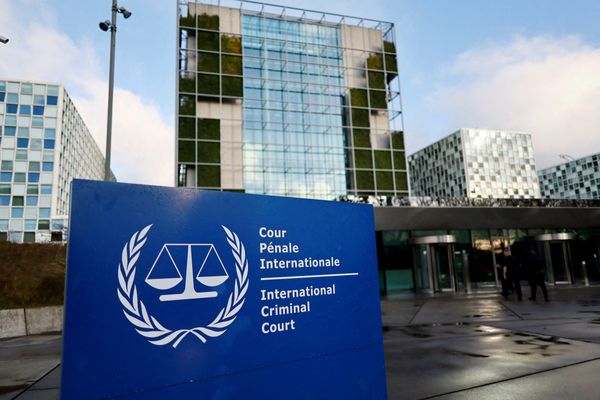Tamil Nadu has come a long way in the prevention and control of leprosy: the prevalence rate per 10,000 population was 0.30 during 2022-23. Efforts at leprosy elimination in the State were initiated decades ago when the prevalence of the disease and the stigma surrounding it were high.
To get today’s top stories from the State in your inbox, subscribe to our Tamil Nadu Today newsletter
October 2, 2023 marked the 114th birth anniversary of an individual who had made consistent efforts in leprosy care — T.N. Jagadisan. He not only shared his birthday with Mahatma Gandhi but was also inspired by his ideals and was closely associated with him. Information from The Hindu archives and that collated by Professor Jagadisan’s grandson Sankara Subramanian, based on his autobiography Fulfilment Through Leprosy, outlines his work towards leprosy eradication.
Born in 1909 at Thachakkadu, a village located eight kilometres from Chidambaram, Professor Jagadisan moved from the field of teaching to social work. He was diagnosed with leprosy that was certified as non-infective in 1942 by Robert G. Cochrane, a British leprologist. The difficulty in getting a job turned him into a leprosy worker.
C. K. Rao, honorary secretary, Hind Kusht Nivaran Sangh, in an article in The Hindu in 1989, recalled that in his zeal for leprosy work, Professor Jagadisan was inspired by Father Damien, a Belgian priest, who went to Molokai as a missionary worker to serve those suffering from leprosy.
Honorary publicity officer
In 1943, he became the honorary publicity officer of the British Empire Leprosy Relief Association. In 1944, Kasturba Gandhi National Memorial Trust was formed to serve rural women and children. Thakkar Bapa was its main architect. Professor Jagadisan approached Thakkar Bapa for help for a leprosy relief and control centre in the highly endemic South Arcot district of Tamil Nadu. A meeting with Mahatma Gandhi was sought and granted on February 8, 1945, at Sevagram. As noted in Professor Jagadisan’s autobiography, Gandhiji, who was observing silence, wrote on a piece of paper asking for a detailed plan with expenditure to go to the board. It was the outcome of this meeting that the Kasturba Gandhi National Memorial Trust sanctioned the formation of Kasturba Kushta Nivaran Nilayam.
‘A disease, not as the disease’
In an article, ‘Modern Trends in Leprosy Treatment,’ published in The Hindu on November 30, 1947, Professor Jagadisan wrote, “The most important modern trend with regard to leprosy is that there is a growing insistence on treating leprosy as simply a disease — not as the disease. Not that the public at large have accepted this view. Not that there are not still even doctors who feel a strange discomfort before a case of leprosy. But clearly the evidence of fact, the voice of reason, the promptings of humanity are breaking the walls of tradition and prejudice.”
On surveying the outpatient registers of the General Hospital, Madras, he found that Gingee taluk in South Arcot district was among the high-endemic areas. He did a survey of the area and found that the prevalence rate was as high as 10% in some pockets and saw many cases of deformities, too. A 52-acre plot was chosen near Kandachipuram in Adukkam village. This was where a hospital was established and it was opened on August 17, 1948. The Nilayam initially provided medical care on an outpatient basis, including diagnosis, observation, treatment, intervention and rehabilitation services. The focus was to remove the stigma associated with the disease so that a vast majority of the patients could continue to be normal members of society, keeping their earning capacity and enjoying touch with relations and friends, according to his autobiography. In October 1947, at the instance of Gandhiji, he helped to conduct the First All India Leprosy Workers’ Conference to consolidate the leprosy work done in India. He also participated in several International Leprosy Congresses that paved the way for integrating leprosy work.
An article, ‘Taking preventive measures against leprosy,’ published in 1986, pointed out how the Nilayam, in four decades of service, had treated about 36,000 outpatients and about 3,700 in-patients. The in-patients were admitted for various reasons, including stabilisation of treatment and care, physiotherapy, surgery, rehabilitation, training, and long-term care. Quoting Professor Jagadisan, the article said, “The impact of this long and persistent work is responsible for reducing the overall prevalence of leprosy from 48 per 1,000 to less than six per 1,000 [in the surrounding villages].”
Mobile clinics
He had also put in place mobile clinics to recognise complications such as ulcer reactions, eye issues and motor deficits. Teams comprising physio-technicians, dressers, and shoemakers also visited the villages. The facility introduced the multi-drug regimen treatment, conducted health education and rolled out physiotherapy as well as vocational training. He was the recipient of the Padma Shri award in 1957. According to The Hindu archives, Professor Jagadisan was awarded the second International Gandhi Award for 1988 for his “Distinguished Work in Leprosy”. He received the award from President R. Venkataraman at a function organised by the Gandhi Memorial Leprosy Foundation.
He died on June 28, 1991, aged 82. As Tamil Nadu continues to work towards elimination of leprosy — after which it would cease to be a public health issue — it is noteworthy to recall what Professor Jagadisan wrote in a 1947 article: “New knowledge takes time to soak into the consciousness even of the specialists. But for over two decades the facts of leprosy have been throwing a continual challenge and engaging men’s minds towards a revolution in their attitude to the disease. The revolution has come. Public health administration in India and abroad is adjusting itself admirably to the most modern views of the disease. From neglect and defeatism we pass on to hope and effort.”







